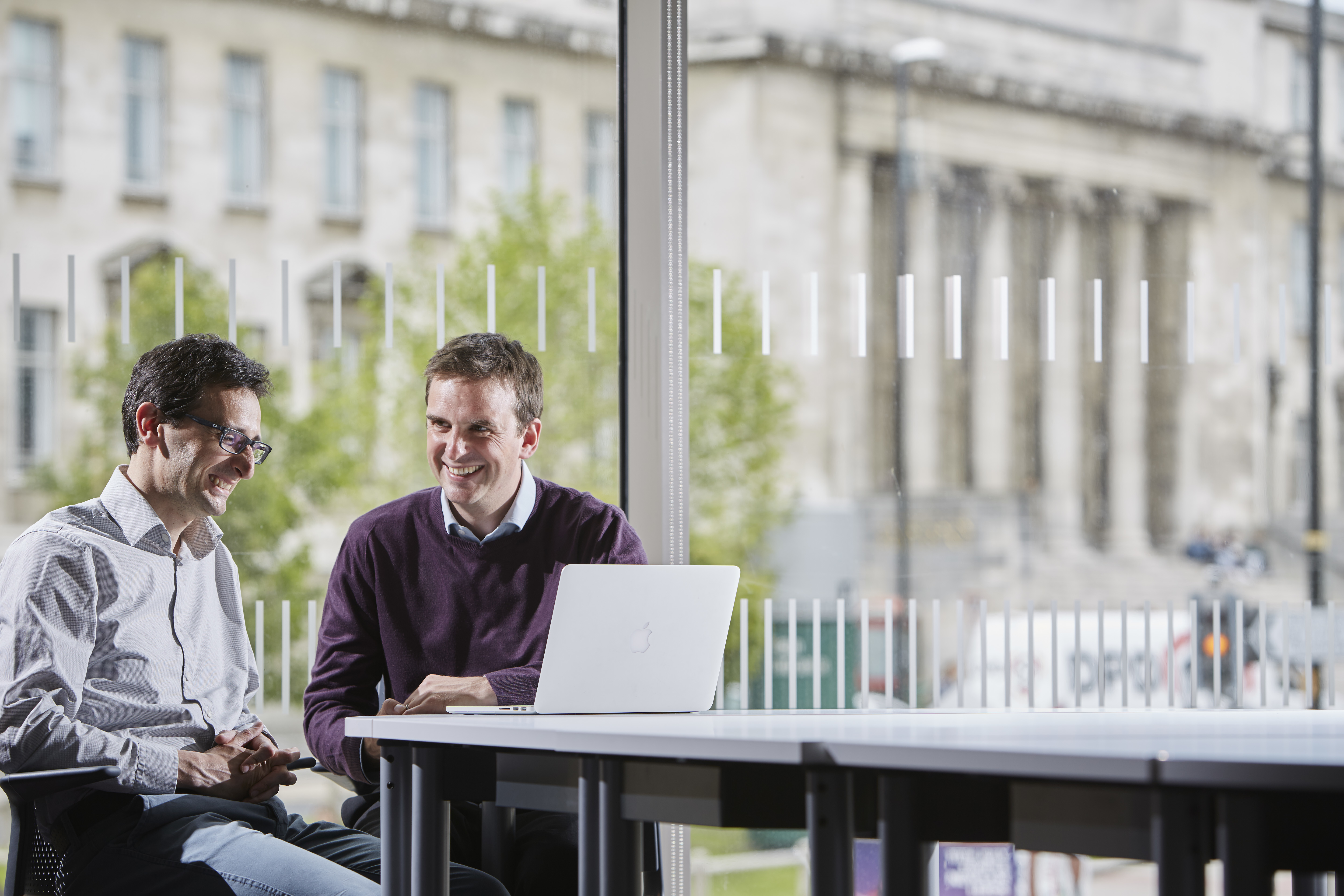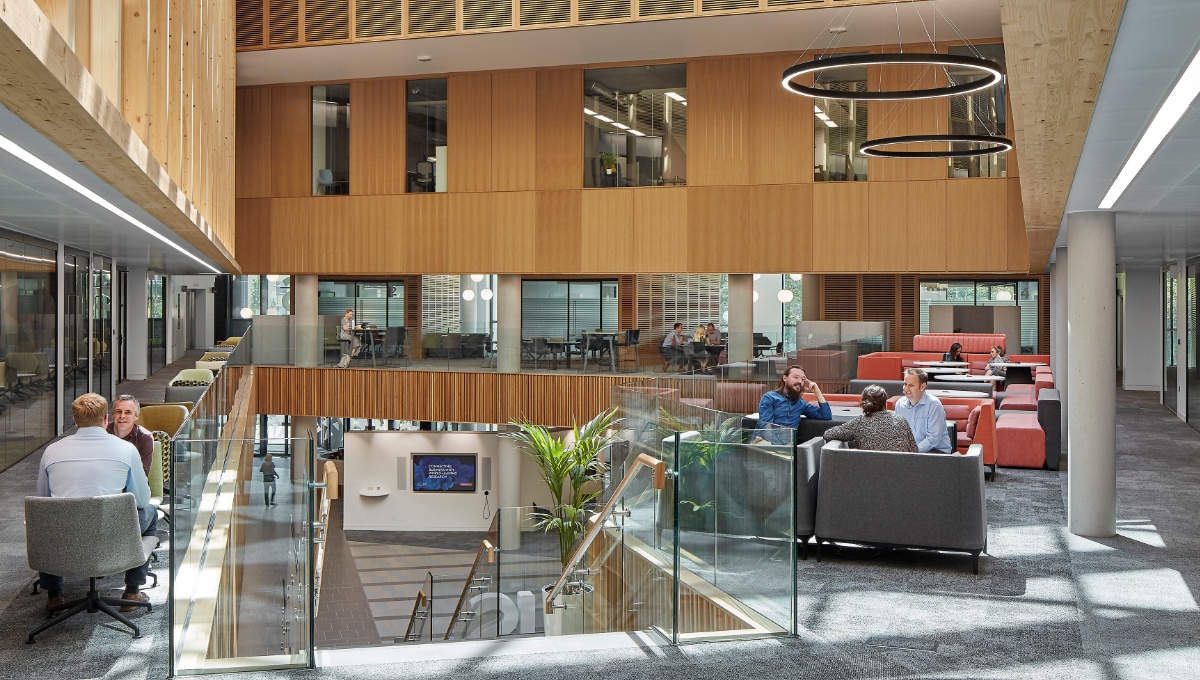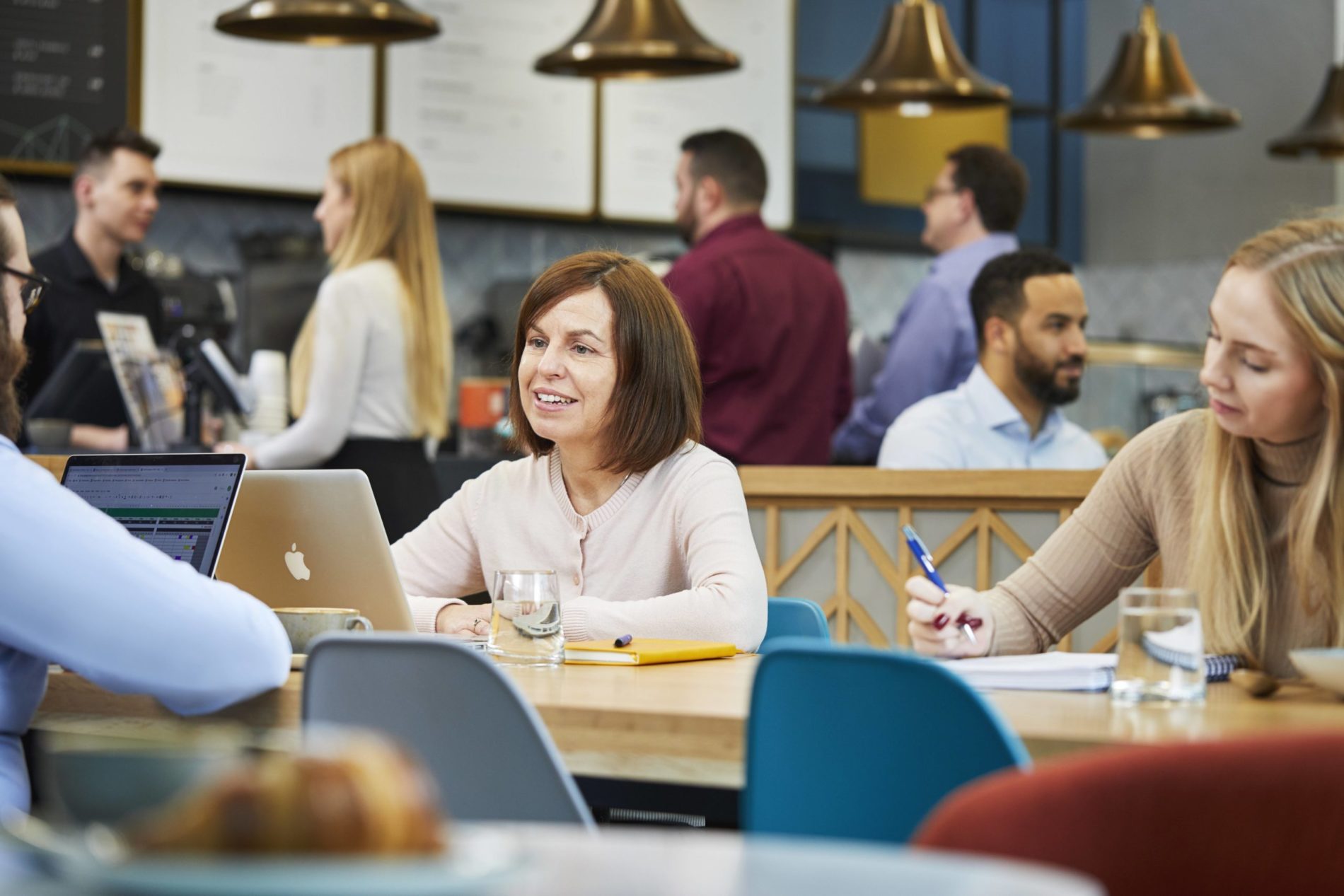
Case studies
Explores case studies from Leeds University Business School, Henry Boot and Itecho Health on the impact of COVID-19 and future ways of working.
A research project carried out at Leeds University Business School presents a golden opportunity for firms to collaborate with leading researchers to consider how the approach to a return to the office can improve the health, happiness and productivity of employees.
According to the CBI Economics/Nexus survey, 93% of firms intend to adopt hybrid working after the pandemic, but firms are making decisions on how this will work in practice at pace and with no blueprint for implementation.
A University of Leeds research project has brought together a multidisciplinary team of experts, from psychologists to engineers, to explore what firms can learn from ways of working during the pandemic, in order to apply greater business resilience for the future and improve employee wellbeing and productivity. The project assesses the experiences – both positive and negative – of people who worked in socially-distanced offices during the pandemic and the impact it has had on behaviour, productivity and staff wellbeing.
Dr Matthew Davis of Leeds University Business School, the project lead, says the project is designed to turn the disruption to office life caused by the COVID-19 pandemic into an opportunity for businesses to think about how design of office space and approach to hybrid working can really help people work to their strengths. There have been innovations around
meetings and events practice during homeworking, for example use of the chat function, that have proved more inclusive and allowed different personality types to thrive. Firms and individuals can challenge their cultural norms, previously established practices and old assumptions of what life was like in the office.
The research project is already showing the speed at which the pandemic
has accelerated the trend that was growing pre-COVID-19 for the adoption of activity-based working or flexible, agile offices. Organisations have also worked hard to keep offices open for essential staff and services, but this has involved adaptations, typically of manual procedures to increase airflow within buildings, for example, the introduction of air quality monitoring. They have increased cleaning regimes, restricted the use of communal areas and developed room or seat booking systems. While some adaptations may disappear quickly as restrictions end, others may become permanent changes amid ongoing heightened sensitivity to physical health and hygiene.
The research project has also shown that there will always be a need
for office space, but that the office is likely to entail a shift in emphasis towards becoming spaces for workers coming together to interact, facilitate knowledge sharing and to fulfil social and cultural purposes. Nonetheless, there is a sizeable proportion of the workforce who do not have suitable home environments to work from and consequently will still require focused workspace as part of future offices. Pre-COVID-19 studies of traditional offices have suggested that 2.5 days working from home per week appears to be a tipping point past which the costs in terms of lost knowledge sharing and chance discussions outweigh benefits, such as cutting out distractions. Interviews undertaken as part of this project suggest that firms may be able to minimise some of these costs with design adaptations to existing space, and the adoption of emerging collaboration tools, but the benefits of offices might be felt more strongly for some workers, such as those new to the workplace.
The project, which completes at the end of September 2022, provides resources and guidance for businesses as they look to put in place their plans for a return to the office and hybrid working, including monthly podcasts, quarterly webinars and a number of short reports. Firms who want
to get involved, either by joining research panels to inform the projects or making use of the project resources, can visit the project website.
Henry Boot plans to emphasise the various flexibilities on offer to avoid feelings of “us versus them” and ensure people are going into the office for the right reasons.
Henry Boot is a business working across the built environment sector. After increasing the opportunities for employees to work flexibly because of the COVID-19 pandemic, the company was eager to retain the benefits of flexible working. This was a reaction to feedback from employees who felt happier and more productive not having to commute and travel to
meetings, as well as the potential organisational benefits flexibility can bring to attract and retain individuals. As a result, Henry Boot plans to roll out a formal agile working framework across the business.
Given the majority of site-based and operational employees can’t work remotely, ensuring that any new framework works for the whole company and avoids creating an “us versus them” culture, in which there is a perception that those who can work from home have more freedoms and flexibility, is key. To ensure this, Henry Boot’s agile working approach recognises that new flexibilities are not all about location, and that their working environment can support other forms of flexibility, such as varying start and finish times and flexible shift patterns, to allow everyone the opportunity to work in the way that best suits them.
Henry Boot expects that by emphasising the variety of flexibility that can apply across the business – instead of just focusing on working from home – everyone will feel included in the agile working offer. They recognise that communicating personal stories of people’s experience of using the flexibilities on offer – whether that’s hybrid working, flexing start times or working from an alternative location – is a powerful way to translate the framework into practice and drive uptake. This helps to boost employees’ understanding of how different parts of the business work and fosters an organisational culture that tries to minimise feelings of “us versus them”.
Henry Boot is also holding conversations on an individual team basis about what people may find useful to do from the office, and what they may easily do from home or an alternative location. Recognising that different teams may have different needs, and ensuring that people
understand what is most useful to do from the office, whether it be team-building days or collaborative working, is important for ensuring that employees understand the rationale of policies, increasing the probability that they will buy into it.
Henry Boot also plans to monitor the success of the agile working framework by seeking feedback from their various employee forums. This will allow them to flex the framework if the initial design is not optimal, ultimately informing an improved group-wide framework.
Note: This case study first appeared in the CBI Hybrid working guide and has been augmented for this report.
Virtual community and innovation: the benefits of maintaining collaborations and networks digitally.
Itecho Health made the most of the communities and networks around them to continue innovating and growing throughout the pandemic. Their innovations are helping ensure that the use of digital technology is maximised to help the monitoring and treatment of those living with long-term health conditions.
The digital health company was established in 2018 but their move to Nexus, the University of Leeds’ innovation hub, a year later was the real catalyst for growth. This opened doors to academic collaboration and helping them build a network that led to significant grant funding and pre-contracts for the prototype of their ground-breaking ‘virtual clinic’ platform Ascelus.
As the COVID-19 pandemic hit, and with some projects initially put on hold, the business used the increased focus on virtual delivery and digital health services to successfully win a £2.2m grant award to implement Ascelus across seven long-term conditions in haematology at three sites in London and one in Yorkshire.
As CEO Dr Adrian Brown acknowledges, the collaboration of academics, clinicians and tech specialists required to bring the project together successfully may have been more difficult had they not already had the relationship foundations in place. But with strong relationships already fostered, the project team was able to meet virtually and more frequently than they would have been able to in person. Itecho used its academic connections to offer business experience to medical students whose work placements had been cancelled because of the pandemic, offering work experience students from Leeds and Sheffield universities with some leading to paid internships.
The firm, identified early on as an innovative and high potential start up, won a place on the prestigious KQ labs accelerator programme at the Francis Crick institute, the first company based in the North of England to do so. Again, the pandemic meant that the programme was delivered virtually, making it more accessible and meaning less travel and time away from the business. Adrian says the pandemic has possibly taken away the need for London premises that may have been required pre-pandemic to meet potential funders and investors.
One positive to come out of the pandemic, may be a better understanding of how digital service can improve the UK’s health services, including productivity and capacity and reducing waiting times for patients.
In this report we’ve uncovered clear challenges and opportunities faced by firms as they enter a radically different post-COVID-19 working world.




